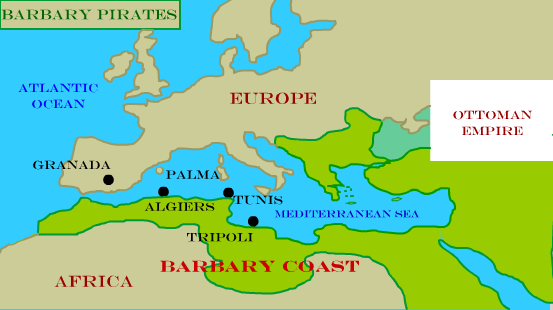Reign From 1299 - 1922
The Ottoman, or Turkish Empire was one of the most powerful empires to ever exist. Its reign lasted approximately 623 years from 1299 to 1922. The Ottoman Empire even fought in World War I. Through much of its history it controlled the entire middle east, much of eastern Europe, and the Barbary coast of north Africa. While the Ottoman Empire is commonly associated with the religion of Islam, it was actually a multi-ethnic, multi-religious empire that served as a crucial link between the western and eastern world.
Golden Age of the Ottoman Empire
The golden age of the Ottoman Empire occurred after the conquest of Constantinople (Turkey) in 1453. With the conquest of Constantinople, the Ottoman Empire became the primary military and territorial power in the Mediterranean region. The empire soon extended its influence throughout eastern Europe and northern Africa and gained control of the valuable shipping routes in the Mediterranean Sea. Additional conquests in the 1500's in central and southern Europe and north Africa earned the Ottoman Empire control of modern day Hungary, Yugoslavia, parts of Italy and other central European territories, as well as Spanish-controlled ports in north Africa such as Algiers and Tunis.
Control of the Mediterranean Sea and Silk Road
From these north African ports, Barbary Pirates attacked and plundered European trade vessels in the Mediterranean Sea and sold the prisoners in the thriving Christian slave markets of Morocco, Tunisia, Libya, and Algeria. European powers, which relied heavily on the Mediterranean Sea as a link between European markets and Asian markets, were forced to pay expensive tributes for safe passage. Furthermore, the Ottoman Empire controlled the land route (Silk Road) through the Middle East that connected the two continents.
The Beginning of the End
The Ottoman Empire, however, began to decline in the late 16th century, when European powers began to find alternative routes to trade markets in Asia. As Spanish treasure ships unloaded gold and silver by the ton from their conquests in the new world, the Ottoman currency declined in value, which had severe consequences for the Ottoman economy. Furthermore, European powers in southern Europe formed an alliance in an attempt to extract the Ottomans from their grip on the Mediterranean. In addition, the Ottoman Empire lost control over their ports in North Africa, which began to operate as independent states. By 1683, the era of Ottoman expansion was over and the empire fell into stagnation before free falling into total decline.

1683 Siege of Vienna
Freefall
By the 1700's, the Ottoman Empire was in full decline as it fell behind the European powers in military strength and technology and began to lose significant territory in its western borders. Its once formidable government became unstable and lost the ability to maintain rule over its vast territory. The Ottoman military suffered from numerous revolts and no longer had the authority to recruit. Throughout the 1800's, Ottoman influence was being challenged on its western front in Austria, Russia, and southern Europe, and on its eastern front in Iran. The constant encroachment by foreign nations and its inability to maintain the massive military power necessary to defend its borders were too much for the continued existence of the empire. By this time, under the rule of the Three Pashas, the Ottoman Empire made one last attempt to regain parts of its lost empire by joining the Central Powers in World War I. Following the eventual defeat of the Central Powers, the Ottoman Empire faced dissolution and its territory was formally divided in 1922 at the Treaty of Sevres. The dissolution of the empire resulted in the independence of Syria, Jordan, Turkey, Iraq, Yemen, Saudi Arabia, Jordan, Lebanon and other nations that make up the Middle East.
Click on the Interactive Map to navigate to a PIRATE haven |

|